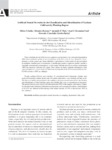Use este identificador para citar ou linkar para este item:
http://www.alice.cnptia.embrapa.br/alice/handle/doc/898723Registro completo de metadados
| Campo DC | Valor | Idioma |
|---|---|---|
| dc.contributor.author | GALÃO, O. F. | pt_BR |
| dc.contributor.author | BORSATO, D. | pt_BR |
| dc.contributor.author | PINTO, J. P. | pt_BR |
| dc.contributor.author | VISENTAINER, J. V. | pt_BR |
| dc.contributor.author | CARRÃO-PANIZZI, M. C. | pt_BR |
| dc.date.accessioned | 2011-08-25T11:11:11Z | pt_BR |
| dc.date.accessioned | 2011-08-25T11:11:11Z | pt_BR |
| dc.date.available | 2011-08-25T11:11:11Z | pt_BR |
| dc.date.available | 2011-08-25T11:11:11Z | pt_BR |
| dc.date.created | 2011-08-25 | pt_BR |
| dc.date.issued | 2011 | pt_BR |
| dc.identifier.citation | Journal of the Brazilian Chemical Society, Campinas, v. 22, n. 1, p. 142-147, 2011. | pt_BR |
| dc.identifier.uri | http://www.alice.cnptia.embrapa.br/alice/handle/doc/898723 | pt_BR |
| dc.description | Vinte variedades de soja (Glycine max), quatorze convencionais e seis variedades transgênicas (RR) foram analisadas quanto ao teor de proteína, ácido fítico, teor de óleo, fitosteróis, cinzas, minerais e ácidos graxos que foram tabelados e apresentados à rede neural do tipo perceptron de múltiplas camadas para a classificação e identificação quanto a região de plantio e quanto a variedade convencional ou transgênica. A rede neural utilizada classificou e testou corretamente 100% das amostras cultivadas por região. Para o banco de dados contendo informações sobre sojas transgênicas e convencionais foi obtido um desempenho de 94,43% no treinamento da rede, 83,30% no teste e 100% na validação. Twenty soybean (Glycine max) varieties, 14 conventional and 6 transgenic varieties were analyzed for protein content, phytic acid, oil content, phytosterols, ash, minerals and fatty acids. The data were tabled and presented to the multilayer perceptron neural network for classification and identification of their planting region and whether they were a conventional or transgenic. The neural network used correctly classified and tested 100% of the samples cultivated per region. For the data bank containing information on transgenic and conventional soybean, a performance of 94.43% was obtained in the training of the neural network, 83.30% in the test and 100% in the validation. | pt_BR |
| dc.language.iso | eng | eng |
| dc.rights | openAccess | eng |
| dc.title | Artificial neural networks in the classification and identification of soybean cultivars by planting region. | pt_BR |
| dc.type | Artigo de periódico | pt_BR |
| dc.date.updated | 2018-02-27T11:11:11Z | pt_BR |
| dc.subject.thesagro | Soja | pt_BR |
| dc.subject.thesagro | Variedade | pt_BR |
| dc.subject.nalthesaurus | Varieties | pt_BR |
| dc.subject.nalthesaurus | Neural networks | pt_BR |
| dc.subject.nalthesaurus | Soybeans | pt_BR |
| riaa.ainfo.id | 898723 | pt_BR |
| riaa.ainfo.lastupdate | 2018-02-27 -03:00:00 | pt_BR |
| dc.contributor.institution | OLÍVIO F. GALÃO, UEL; DIONÍSIO BORSATO, UEL; JURANDIR P. PINTO, UEL; JESUÍ V. VISENTAINER, UEM; MERCEDES CONCORDIA CARRAO PANIZZI, CNPSo. | pt_BR |
| Aparece nas coleções: | Artigo em periódico indexado (CNPSO)  | |
Arquivos associados a este item:
| Arquivo | Descrição | Tamanho | Formato | |
|---|---|---|---|---|
| mercedesj.braz..pdf | 919,57 kB | Adobe PDF |  Visualizar/Abrir |









